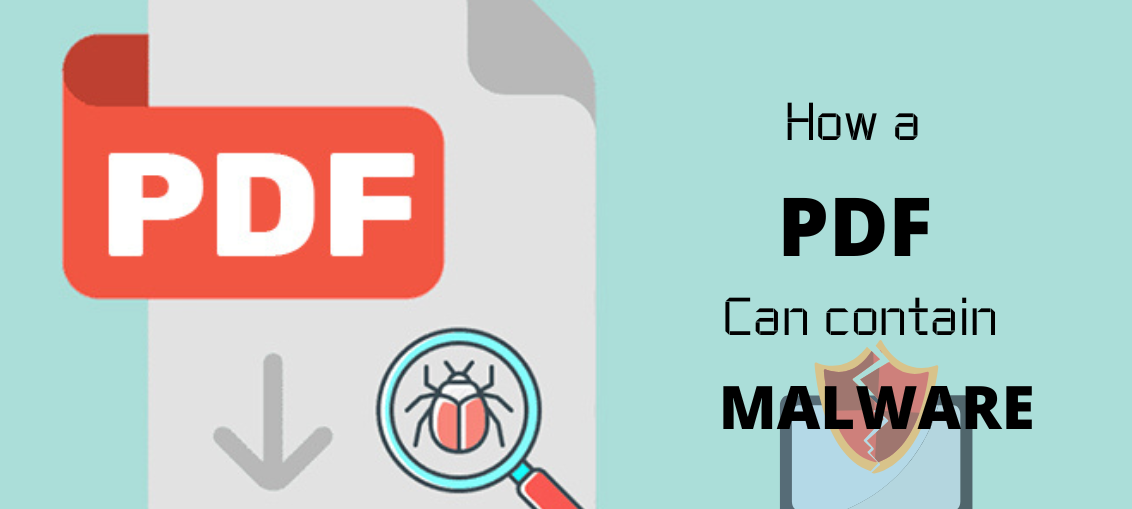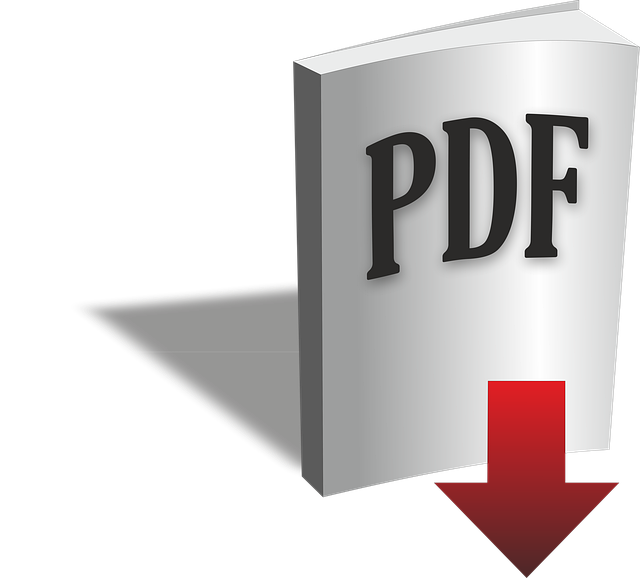Learn how a PDF can contain malware in this post…
A PDF is one of the most frequently used file formats for sending documents, commonly used everywhere, a successful replacement for print-outs, and favorite means of attack among malicious actors. PDF files are not easily edited in comparison to rich text files and cannot just be opened and altered.
A PDF is typically used for contracts, bank statements, and other essential documents that need to be signed and sent. Unfortunately, a PDF file can contain a virus, but it’s not the text or illustrations that harm your device.
Instead, it is everything else within these files, combined with software, that triggers the threats. The “fill & sign” abilities of PDFs are where the danger is located, working from inside with the help of special scripts.
This article will discuss how malicious code can be lying dormant within a PDF file and how PDFs need proactive, multi-tiered protection against viruses and malware to keep them from infecting your device.
Table of Contents
How PDFs Can Contain A Virus
Security threats come in a number of different ways. PDFs may sometimes be embedded with code allowing documents to be signed and edited, and they may also contain viruses. A virus is a program that may change or delete data, while trojans typically gather information on a user or their device.
This is comparable to Microsoft Word files that are infected with viruses as the malware is hidden inside macros scripts, and the infected PDF file contains malicious JavaScript code.
Viruses, trojans, and malware can often be found in email downloads or attachments like eBooks and other documents and sent from unknown or unfamiliar senders.

Because PDF files can execute code on your device, dynamic and static elements can be manipulated to inject malicious scripts, such as:
- Javascript: Javascript is used in coding to control browser appearance and functionality and has previously been used to exploit vulnerabilities in Adobe and other PDF readers.
- Hidden Objects: PDFs can have embedded and encrypted objects that are executed when a file is opened by the user, which prevents antivirus scanners from analyzing them.
- Multimedia Control: Embedded objects in a PDF can also be a QuickTime media or flash file, which have vulnerabilities attackers can exploit.
READ ALSO: PDFBear: Your Online Alternative For Merging PDF Files
How An Infected PDF Can Contaminate Your Device
As PDFs often contain scripts for extended capabilities, such as the fill and sign functionality, they can also display the date, add print buttons, and format data. Unfortunately, hackers will likely use more sophisticated methods to add malicious code to PDF files.
PDF readers are an unwilling accomplice of hackers due to the apps themselves or their plugins being able to run the injected code. Third-party plugins in PDF-reading software can also be a gateway for malicious scripts.
Another method attackers will use is PDF phishing, an approach where emails are sometimes executed more efficiently than generic phishing attempts and target specific recipients.
The content of the email won’t have suspicious links; instead, it will contain files with hidden viruses in the scripts, download links to malware files, or have a trojan virus disguised as a PDF in the attachment.
How To Protect From A PDF Virus
Should you receive a PDF from a suspicious sender, scanning the document for viruses is vital. It is possible to extract a safe copy of the file, but sometimes, it’s best not to open the document. Some other tips to prevent an infection include:
- Disable JavaScript on your PDF reader.
- Do not allow PDF readers to execute Non-PDF files using external applications.
- Disable PDF reader from Windows startup programs.
- Keep Macros disabled. Malicious files might persuade you to enable them, but you should not unless it is necessary.
- Do not download or open file attachments sent by unknown email senders.
- Ensure Windows OS, PDF reader program, and Antivirus is up to date.
- Back up regularly and keep it encrypted.
- Be cautious when clicking links in PDFs from unknown senders.
How A PDF Can Contain Malware: FAQs
PDFs are a convenient way to share documents, but they can also be a potential security risk. Here are some answers to frequently asked questions about malware in PDFs:
Can PDFs actually contain malware?
Yes, PDFs can harbor malware just like other file formats. Hackers can exploit various features within PDFs to embed malicious code.
How do PDFs typically contain malware?
There are a few ways malware can sneak into a PDF:
- Embedded Scripts: PDFs can include JavaScript code. Malicious scripts can download malware, steal data, or redirect users to phishing sites.
- Hidden Content: Hackers might hide malicious code within the PDF itself, making it invisible to the naked eye. This code can activate when the user performs a specific action, like clicking a link or opening an attachment.
- Social Engineering: PDFs can be used in phishing scams. The PDF might look like a legitimate document from a bank or credit card company, tricking users into opening malicious attachments or clicking infected links.
What are some signs a PDF might be malicious?
- Unexpected Attachments: Be wary of PDFs containing unexpected attachments, especially if you weren’t expecting them.
- Typos and Grammatical Errors: Legitimate companies typically proofread their documents. PDFs with typos or grammatical errors could be a red flag.
- Urgency or Scarcity Tactics: Phishing scams often create a sense of urgency or scarcity to pressure users into clicking links. Be cautious of PDFs that use such tactics.
How can I stay safe from malware in PDFs?
- Download from Trusted Sources: Only download PDFs from reputable sources. Avoid opening PDFs from unknown senders or suspicious websites.
- Disable JavaScript in Your PDF Reader: Most PDF readers allow you to disable JavaScript. This can help prevent malicious scripts from running.
- Keep Your PDF Reader Updated: Software updates often include security patches. Ensure your PDF reader is updated with the latest version.
- Use Antivirus Software: A good antivirus program can help detect and block malware hidden within PDFs.
What should I do if I suspect a PDF is malicious?
- Don’t Open It: The safest course of action is to avoid opening a suspicious PDF altogether.
- Delete It: Delete the PDF from your device.
- Scan Your System: If you’ve already opened the PDF, run a scan with your antivirus software to detect any potential malware.
The Bottom Line
Regardless of whether or not a PDF is infected, it does not solely depend on the file extension but also depends on the vulnerabilities in the software.
Because a PDF reader may potentially contain a buffer overflow vulnerability, an attacker can construct a special PDF file to exploit that vulnerability.
A PDF can contain a virus hidden in multimedia files, JavaScript code, hyperlinks, or system commands. The virus can be triggered in your system by opening the file or executing specific tasks.
To prevent malicious actors from infecting your device, you can test the PDF for malware and protect your systems from infection using best cybersecurity practices.
INTERESTING POSTS
- Macropay Scam Alert: Fake E-Commerce Sites
- Why Is A CompTIA Certificate Important?
- What is Magento? Everything You Need To Know
- 6 Ways To Optimize Your DevOps Team Productivity
- Ways Manufacturers Can Benefit from Going Online
- How To Get Started With Software Test Automation
- Essential Google Chrome Add-ons for Security
- GoGoPDF: Complete PDF Online Tools Free For Use
- 6 Ways To Secure Your Home Construction Site
- GogoPDF: The Best Online Tool To Compress PDF
About the Author:
Marie Beaujolie is a computer network engineer and content writer from Paris. She is passionate about technology and exploring new ways to make people’s lives easier. Marie has been working in the IT industry for many years and has a wealth of knowledge about computer security and best practices. She is a regular contributor for SecureBlitz.com, where she writes about the latest trends and news in the cyber security industry. Marie is committed to helping people stay safe online and encouraging them to take the necessary steps to protect their data.
Meet Angela Daniel, an esteemed cybersecurity expert and the Associate Editor at SecureBlitz. With a profound understanding of the digital security landscape, Angela is dedicated to sharing her wealth of knowledge with readers. Her insightful articles delve into the intricacies of cybersecurity, offering a beacon of understanding in the ever-evolving realm of online safety.
Angela's expertise is grounded in a passion for staying at the forefront of emerging threats and protective measures. Her commitment to empowering individuals and organizations with the tools and insights to safeguard their digital presence is unwavering.







